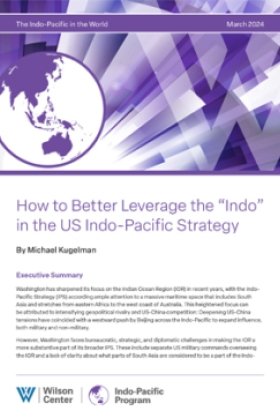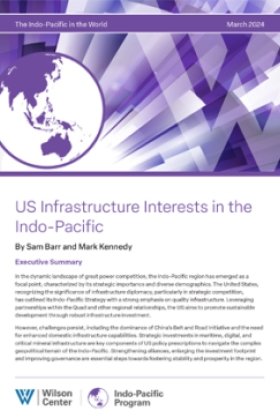India's Quest for a Lower Carbon Footprint
Wilson Center Public Policy Scholar Ajay Shankar discusses India's emissions reductions and how to to bring them down further.
Overview
Between 1994 and 2007, India reduced its carbon dioxide emissions by 35 percent. As a result, the country's emissions per capita now register at just over a ton per year—less than China (nearly five tons), and much less than the United States (18 tons). On May 10, Wilson Center Public Policy Scholar Ajay Shankar discussed how India made these reductions, and what the nation plans to do to bring them down further in the decades ahead.
According to Shankar, several factors account for the 35 percent reductions. One is market-based, with high costs having discouraged heavy carbon-based energy consumption. India levied a "huge de facto" carbon tax on all commercial and industrial uses of electricity, which led to prices as much as 80 percent higher than the cost of supply. Another reason is legislation: New Delhi passed a robust energy conservation law. The private sector was a major contributor to the reductions; Shankar pointed out that India is now the world's largest hub for small fuel-efficiency vehicles, as embodied by the Tata Motors corporation's Nano car.
Shankar acknowledged the need for further carbon reductions. As India's economic growth continues and its citizens become wealthier, carbon emissions will likely increase as more people buy cars and invest in air conditioning. Accordingly, the country has announced its intention, by 2020, to lower emissions by 20 to 25 percent from 2005 levels. He identified two carbon-reducing "opportunities" for India in the coming decades. One is to make irrigation more energy-efficient through the use of solar energy.
Another opportunity lies in India's cities, where 300 to 400 million people are expected to flock over the next two to three decades. Urbanization presents a considerable carbon challenge, given the proliferation of carbon-emitting vehicles and AC units envisioned by such migration. Shankar spoke of the need for "smart cities" replete with "green buildings," parks, and electric vehicles. He argued that India has created these types of cities before—including Chandigarh, the capital of Punjab Province, back in the 1950s.
Shankar stated that solar and nuclear energy constitute the "game-changers" for lessening the country's carbon emissions. New Delhi hopes to generate 20,000 megawatts of solar capacity by 2020, with projections of grid parity by 2017— meaning that in just several years, solar power could be as cheap to generate as fossil-fuel-driven electricity. He also underscored the priority New Delhi places on nuclear energy, noting that prime minister Manmohan Singh was willing to stake his political survival on the passing of a controversial civil nuclear deal with Washington because of nuclear's environmental benefits. Shankar insisted that the Indian government will not be deterred by Japan's recent nuclear crisis.
While Shankar described New Delhi's 20-to-25 percent reductions goal as "ambitious," he contended that he is more optimistic than he would have been several years ago about India's prospects for attaining that objective. India, he concluded, must "rule out no option, and pursue every option intelligently."
By Michael Kugelman
Robert M. Hathaway, Director, Asia Program
Documents & Downloads
Speaker
Ajay Shankar
Retired Senior Official, Indian Administrative Service, India
Hosted By

Indo-Pacific Program
The Indo-Pacific Program promotes policy debate and intellectual discussions on US interests in the Asia-Pacific as well as political, economic, security, and social issues relating to the world’s most populous and economically dynamic region. Read more
Thank you for your interest in this event. Please send any feedback or questions to our Events staff.










